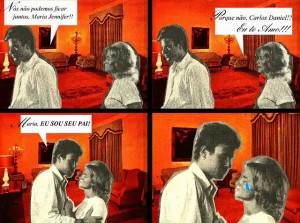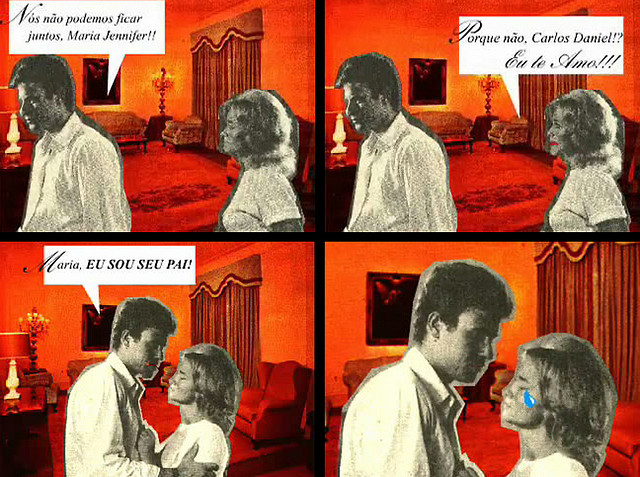How soap operas shaped North American culture
Date Posted: June 6, 2011
Print Edition: May 27, 2011
By Nick Ubels (The Cascade) – Email

After 41 years on the air and over 10,000 instalments, the long-running ABC soap opera All My Children will air its final episode this fall along with One Life to Live. Soap operas have been in steep decline since the mid-1990’s, but will these two cancellations be the final nails in the coffin for the once popular genre?
In 1969, there were 20 daytime soap operas on U.S. network television. Now there are only four, and they are struggling to keep up with reality and talk shows, which are much more attractive to networks due to their lower production costs and increasingly high ratings. Compared to last year’s ratings for the same week, daytime’s most popular soap, The Young and the Restless, was down approximately 483,000 viewers, according to Neilson TV Ratings.
Although scripted daytime television has never attracted the critical esteem of some prime time programming, it once held an important place in North American culture, reaching an estimated 20 million dedicated American followers every week in 1976, according to TIME Magazine. Changing audience sensibilities – spurred by the advent of first confessional talk shows and then reality television – have been steadily eating away at their ratings with a technique gleaned from the soaps themselves: heightened viewer identification.
Soap operas first came to prominence in the early days of romantic radio serials, taking their name from personal hygeine companies like Procter and Gamble who sponsored the live programs. These melodramas centered on fantastic events in the lives of the elite. Murder, paternity suits, divorce, and other scandalous affairs provided an unprecedented level of escapism for listeners. It was only natural that these popular pulp narratives would find a home on television in the 1950s.
So what made these new serials so different from other fiction? As Dennis Potter notes in his 1977 article for College English entitled “Soap Time,” Aristotle rightly defined drama as possessing a beginning, middle and end, but soap operas forgo these basic elements entirely. When one watches a soap opera, it is easy to lose sight of the initial conflict or even the original characters.
Take the second-longest running soap of all time, Days of our Lives. When the show premiered in 1965, it told the story of the trials and tribulations of the Hortons, a family of doctors living in Salem. Today, not one of its original cast members is still working on the show. In fact, Suzzane Rogers, who joined the cast 8 years on in 1973 as Margeret Horton, is the only current regular cast member to have worked on the show before 1980.
This sort of memory-impaired storytelling makes soap operas a bit of an anomaly compared to typical linear narratives, advancing such absurd plots as bringing Matthew Ashford’s character back from the dead three times during his stint on Days of our Lives. Yet this conceit has worked well in comic books and graphic novels, enabling new writers to provide fresh, disentangled storylines for their audiences.
A soap opera only ever ends according to criteria external to the story itself, such as low ratings. This firmly establishes the show as a commodity instead of an art form. While there seems to be an ongoing tension between content creators and network personnel in prime time television, shows are often granted a greater say in their length as seen in the case of ABC’s LOST, whose end date was established three years in advance to accommodate the writers’ vision.
The soap opera reached its peak as a pop culture phenomenon in the 1960s and 1970s. In a 1976 cover story about the craze, TIME reported that CBS was obliged to eliminate all poor characters from their soap operas because the network was receiving too many CARE packages from concerned viewers. One viewer complained in a letter about the frustrated romance of the characters of Another World, saying that she had already purchased four dresses and four bottles of champagne to celebrate each season’s ultimately failed nuptials. She lamented, “Why don’t you let them get married?”
It is no coincidence that soap operas began to decline in ratings with the emergence of confessional day time talk shows such as The Oprah Winfrey Show in the 1980s and reality television starting with The Real World in 1992. Both of these formats similarly promise a programming option unbound by artistic constraints for networks and a narrative with characters designed to be relatable, so relatable that audiences could presumably participate in such a program themselves.
More importantly, these formats anticipated the emergence of today’s confessional digital culture in which relatability has been subsumed within a greater desire to be the centre of attention. There is an ever-increasing urge to feel like a participant in whatever entertainment one chooses to engage in. Where soap operas helped plant the seeds for this type of hyper-identification, daytime talk and reality programming have further exploited this desire and come out on top as a result.
Yet something has been lost in the exchange. Viewers have traded in the exciting intrigue and suspense-filled vicarious living of soap operas for the mundane parallel lives of reality television. While neither is a particularly artful example of modern entertainment, reality television suffers from a substantially greater lack of imagination.


